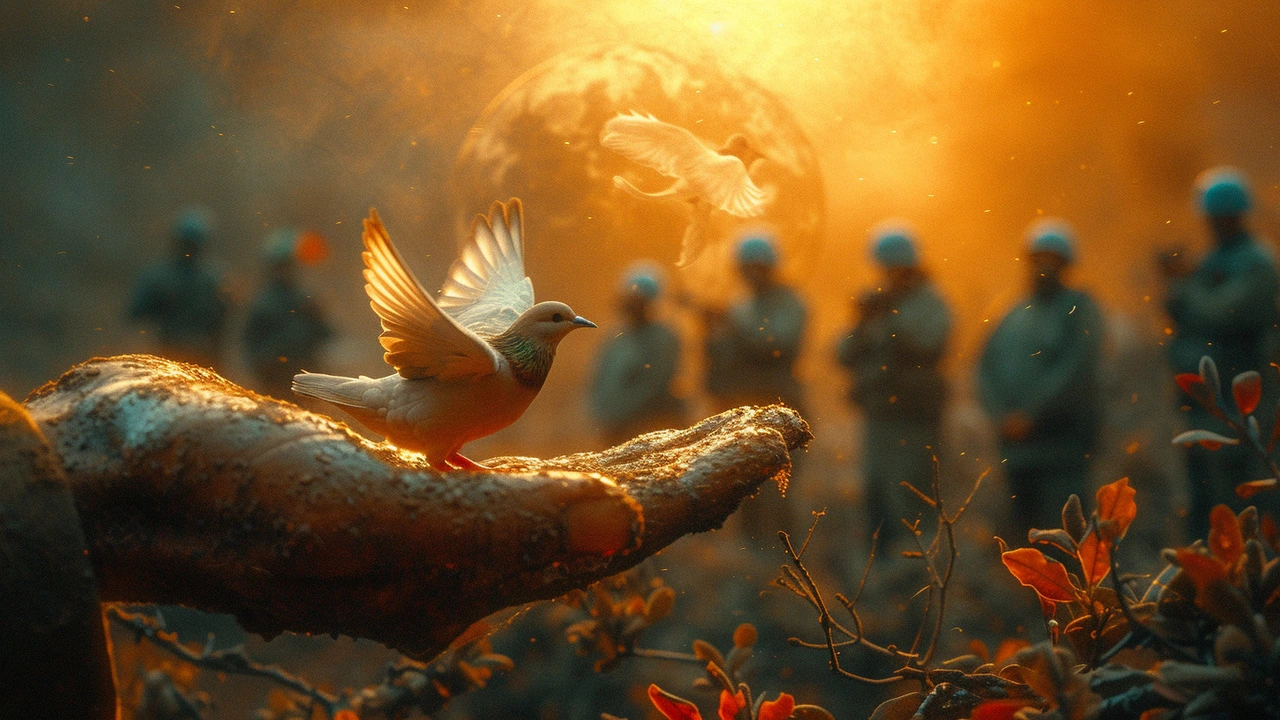Ever wonder what keeps fragile regions from sliding back into war? Global peace operations put trained people on the ground to protect civilians, support political talks, and help rebuild local institutions. They act as a buffer between armed groups, offer quick medical help, and monitor ceasefires. That mix of tasks is why peace operations matter where violence could return fast.
Peace operations come in many shapes. Some are led by the UN, some by regional groups or coalitions. Common tasks include patrols, training local police, disarming combatants, and supporting elections. A mission in a city looks different from one in a remote border area, but the goal stays the same: reduce violence so political solutions can grow.
On a given day a team might investigate reports of new arms, escort aid convoys, set up checkpoints, or run community meetings to calm tensions. They collect information that helps negotiators and they train local forces on human rights and crowd control. They also support courts and help return displaced people home safely. Most of this work is careful, slow, and often unnoticed.
Technology like drones, secure radios, and satellite imagery has changed how missions gather info and stay safe. Partnerships matter: local leaders, NGOs, and donor countries must coordinate. But problems persist — limited funding, unclear mandates, and local mistrust make progress fragile. Sometimes peacekeepers face attacks or politics that prevent them from acting. Still, small, consistent steps often bring the biggest gains.
Where can readers follow this work? Watch mission briefings, read UN reports, or follow trusted outlets that cover conflict and human rights. If you care about making aid and peace more effective, support groups that push for better training, stronger mandates, and transparency. Even simple things like asking your representatives about peacekeeping budgets make a difference.
Real examples help. In some missions peacekeepers helped stop local armed clashes by creating joint patrols with community members. In other places they helped run voter registration so elections could happen. Those actions are practical, low-glamour, and they build trust. Trust often leads to negotiations and local solutions that last longer than any short military fix.
How do missions measure success? They track numbers of violent incidents, civilian deaths, and displaced people returning home. They also look at local confidence in institutions and whether talks move forward. Numbers tell part of the story, but local stories and steady reductions in fear show real progress.
Quick tips: follow UN mission pages for source documents, read NGO field reports for local details, and check independent trackers for incident data. If you write about missions, verify quotes and dates. Reliable reporting helps communities and keeps pressure on leaders to do the right thing.
If you want steady updates, bookmark this tag for clear stories and mission updates. We break down complex reports into what matters for people on the ground. Questions or tips? Send them our way — informed readers help make peace operations smarter and more effective.
Stay curious, stay informed, and support practical peace.

Hello, everyone! Today, I'm eager to dive into a topic that's close to my heart – the evolving nature of peacekeeping. Peacekeeping missions have transformed significantly over the years, adapting to the complexities of modern conflicts. Gone are the days of mere observation; nowadays, peacekeepers are often tasked with enforcing mandates and protecting civilians in hotspots around the globe. What's more, they now have to navigate the murky waters of politics and cultural sensitivities to maintain peace and stability. Join me as I explore the changes, challenges, and the future direction of international peacekeeping efforts.
